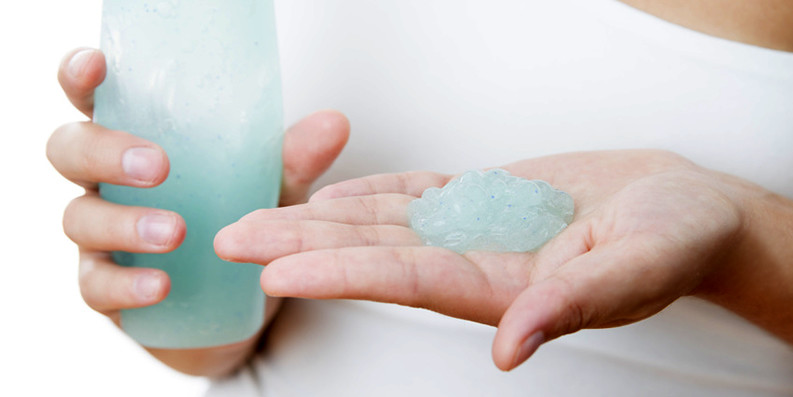Microplastics

Spotlight: In the discussion about “microplastics“ a distinction must be made between solid and dissolved plastics. The critical attitude towards microplastics concerns solid plastic particles. Dissolved polymers need to be distinguished from them and must be considered separately.
What does the term “microplastics” mean?
- Microplastics: solid, water-insoluble plastic particles
- Diameter: < 5 mm
- are used in some cosmetic products, e.g. make-up, nail and face care products
- have various functions, such as skin care or adhesion agent
Dissolved polymers must be distinguished from fixed plastic particles (microplastics):
Dissolved polymers in cosmetics
- dissolved in the product, no particles
- contribute according to the current state of knowledge hardly or not at all to marine pollution by microplastic particles
- non-toxic (in environmentally relevant concentrations)
- are for the most part filtered out or degraded in wastewater treatment plants
What are the concerns?
- Fixed plastic particles could be mistaken for food by sea creatures, hence get into the food chain and have an adverse effect on the ecological system “sea”
- Microplastics could endanger human health
What do the experts say?
- According to experts from the German Federal Environmental Agency (UBA) the share of microplastics originating from cosmetics in the total occurrence of microplastics in the seas is approximately 1 %.
- The German Federal Institute for Risk Assessment (BfR) states in its October 2018 communication that a health risk from dermal or unintentional oral intake of microplastics via scrubs or shower gels is unlikely in the BfR’s view
What are the approaches to solve the problem?
- Far-reaching renunciation of solid, water-insoluble microplastics
- Voluntary commitment of the cosmetics manufacturers: replace microbeads by 2020 through alternative substances
- Future detailed EU-wide Regulation under preparation
Current development trends in the cosmetics industry:
- Reduction of the amount of solid, non-degradable plastic particles with exfoliating or cleaning effect in rinse-off cosmetic products by more than 97 %
What about microplastics in so-called leave-on products?
- Leave-on products remain after their application on the skin, such as make-up or powder
- Are typically not rinsed off but disposed of via household waste and thus do not end up in the wastewater
